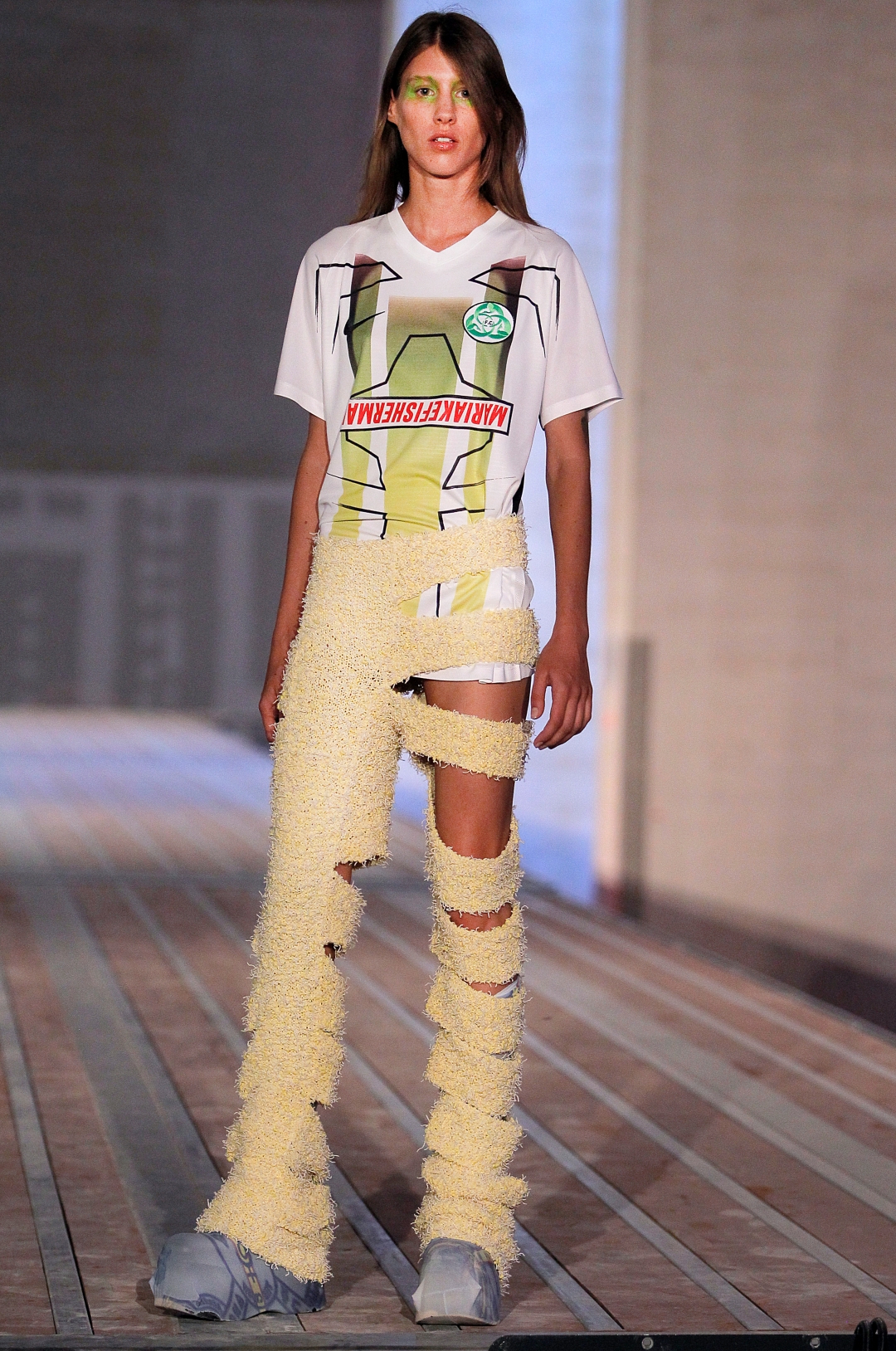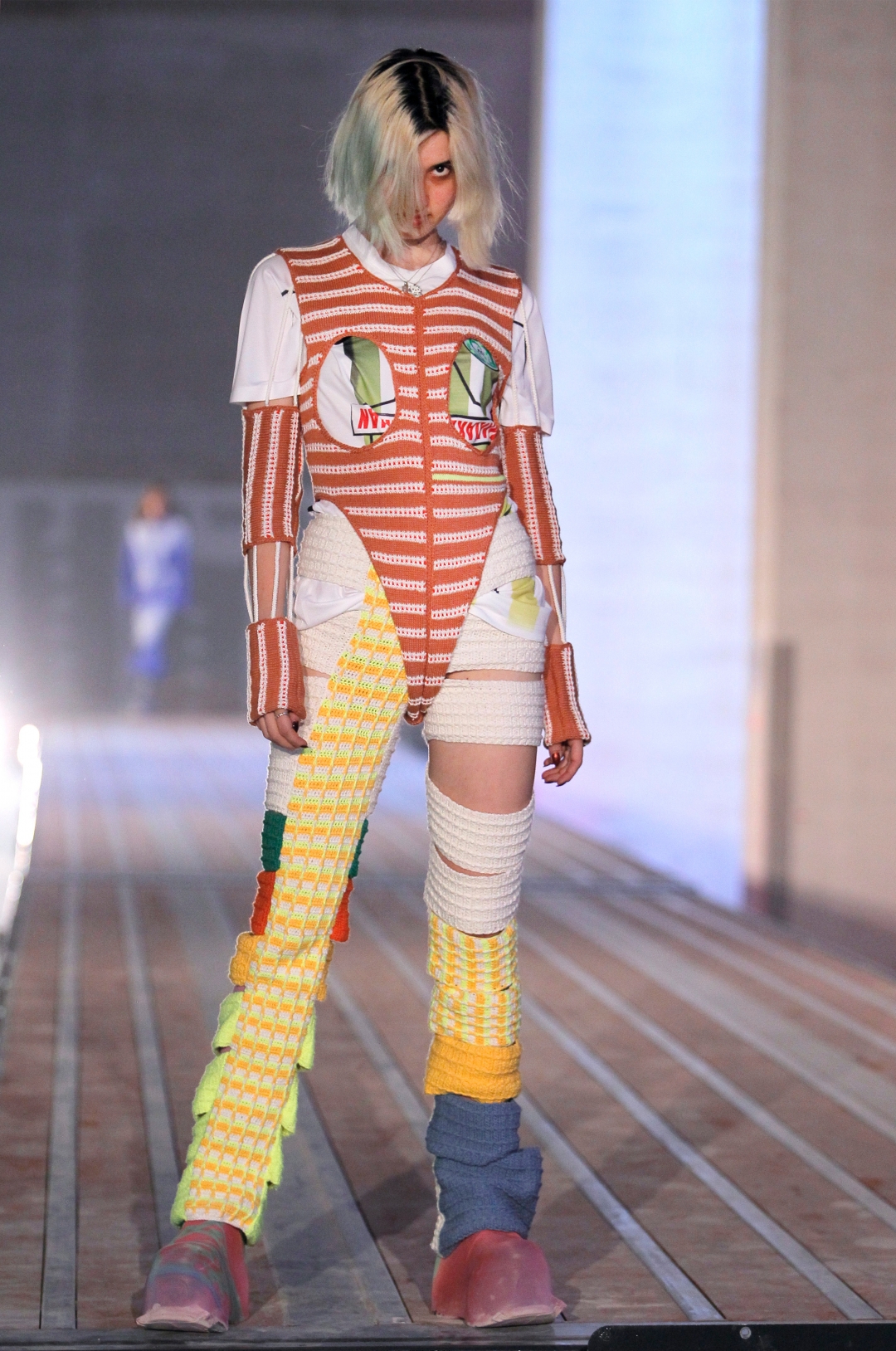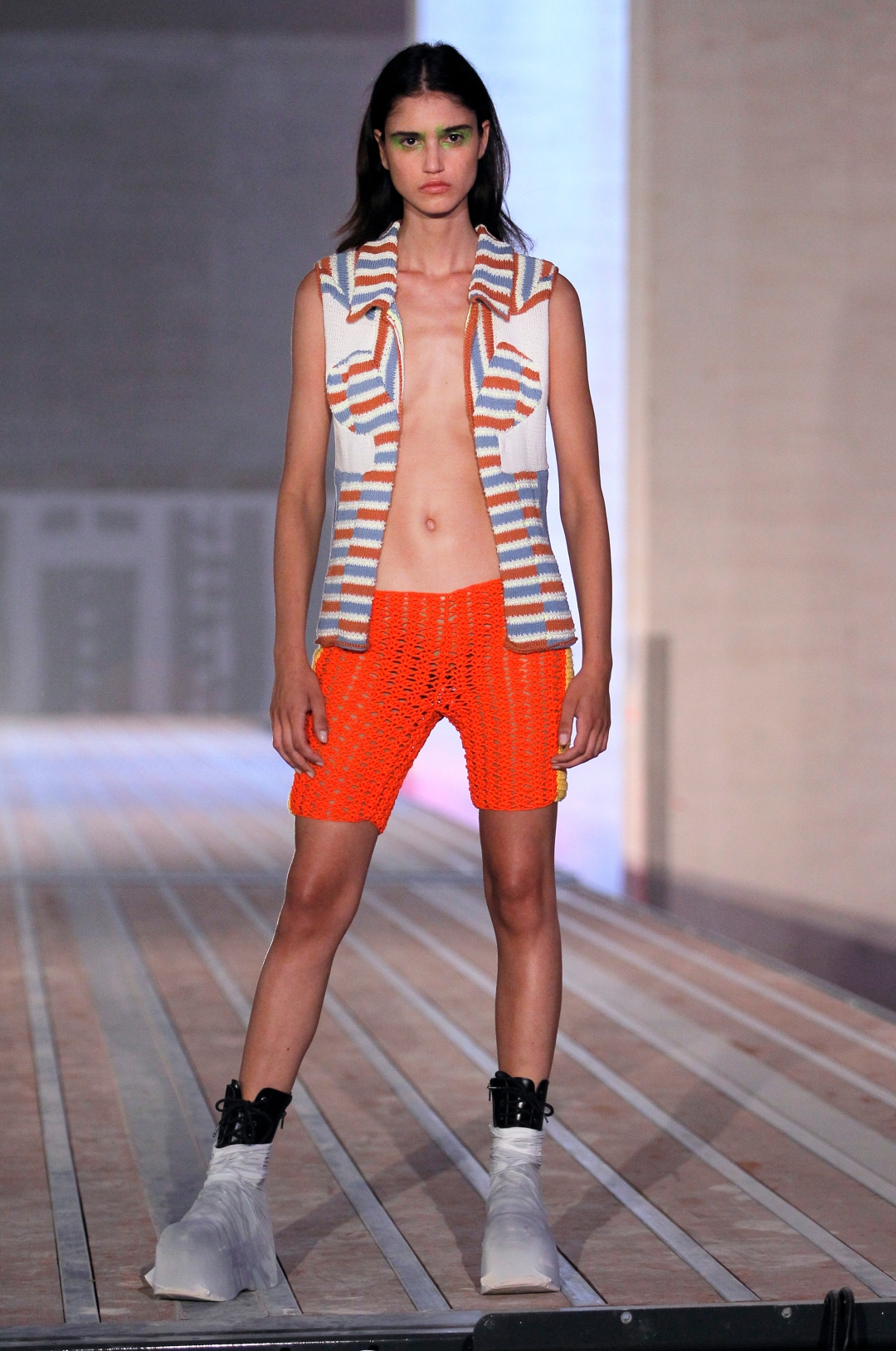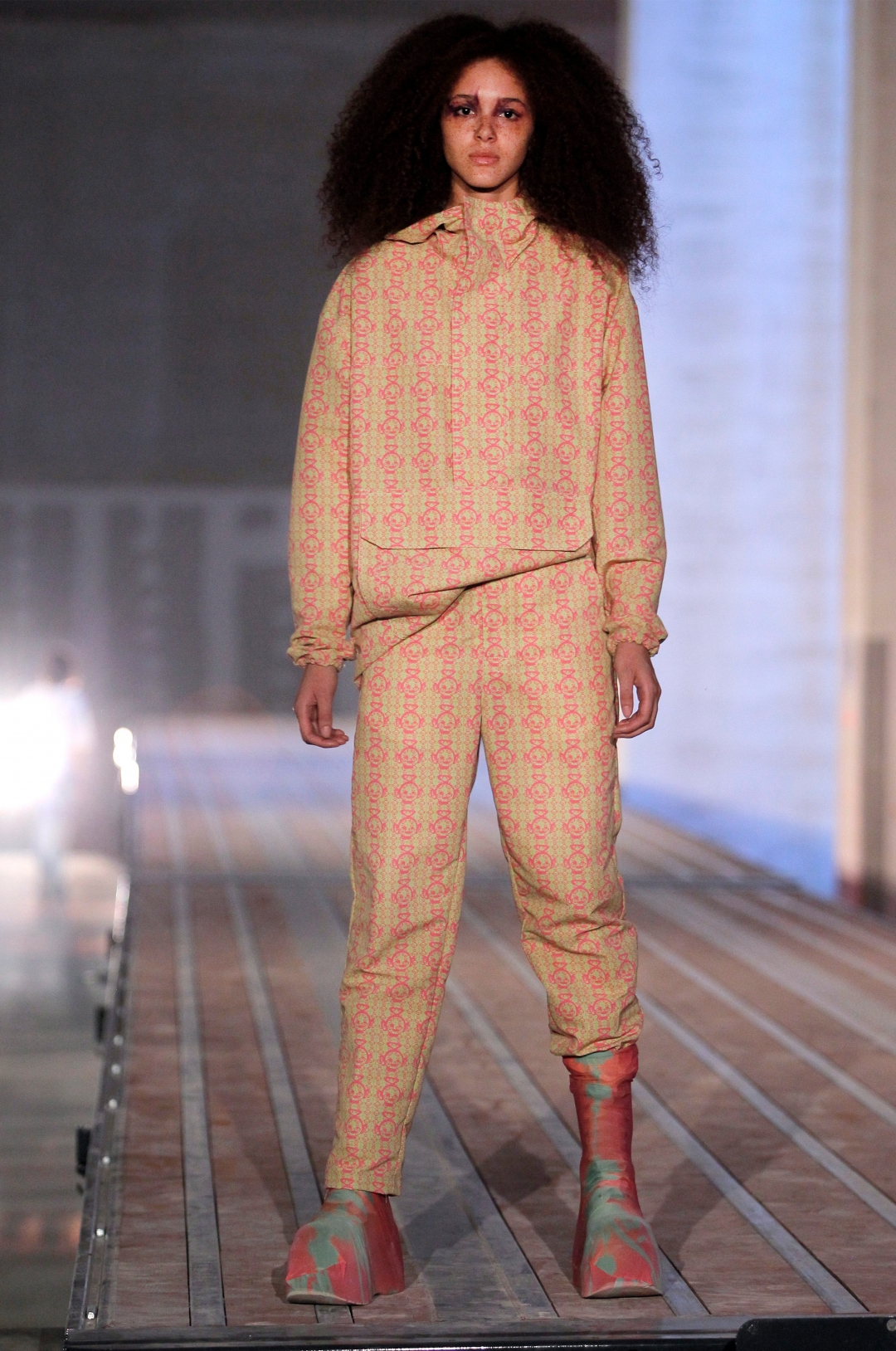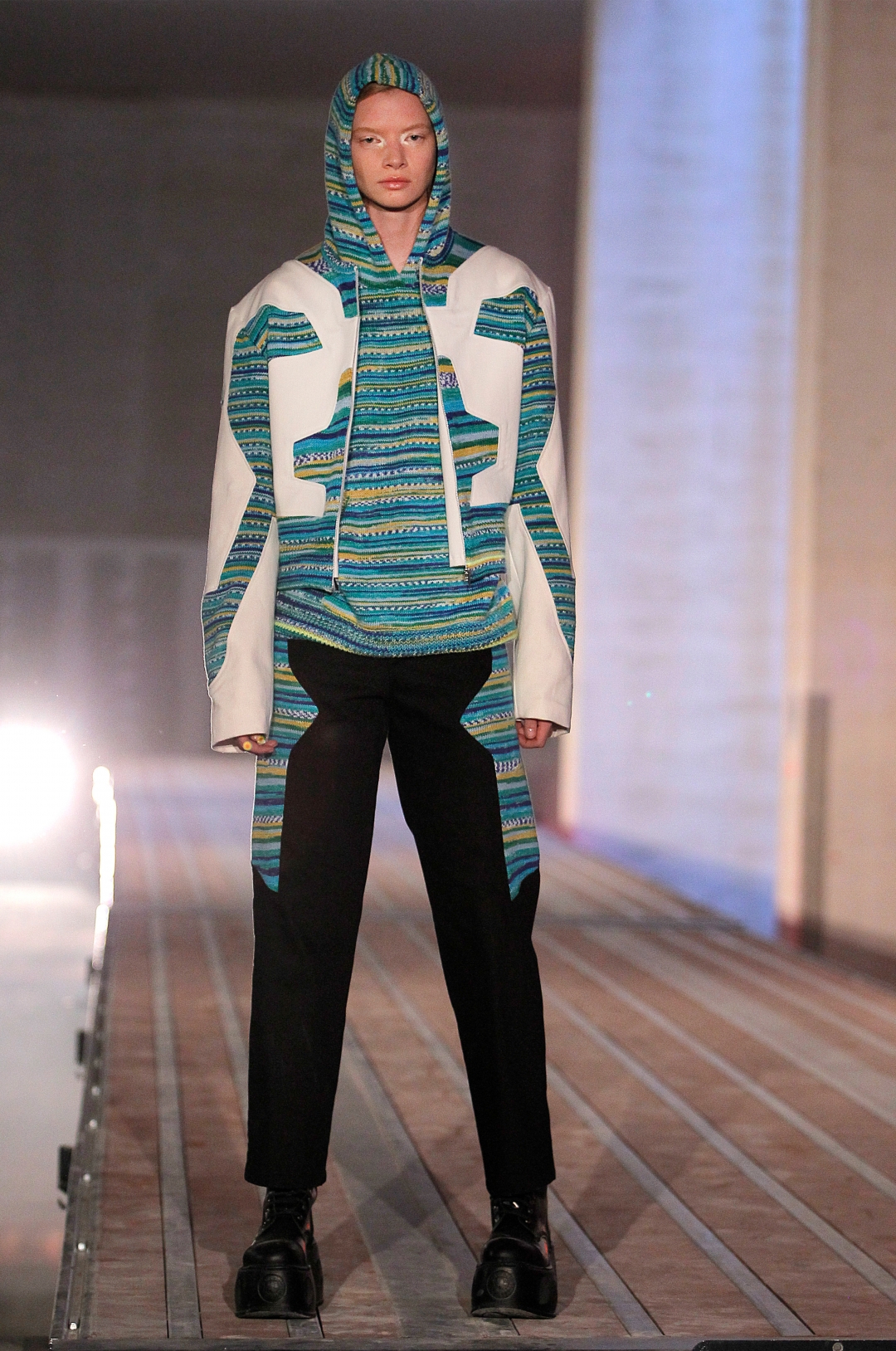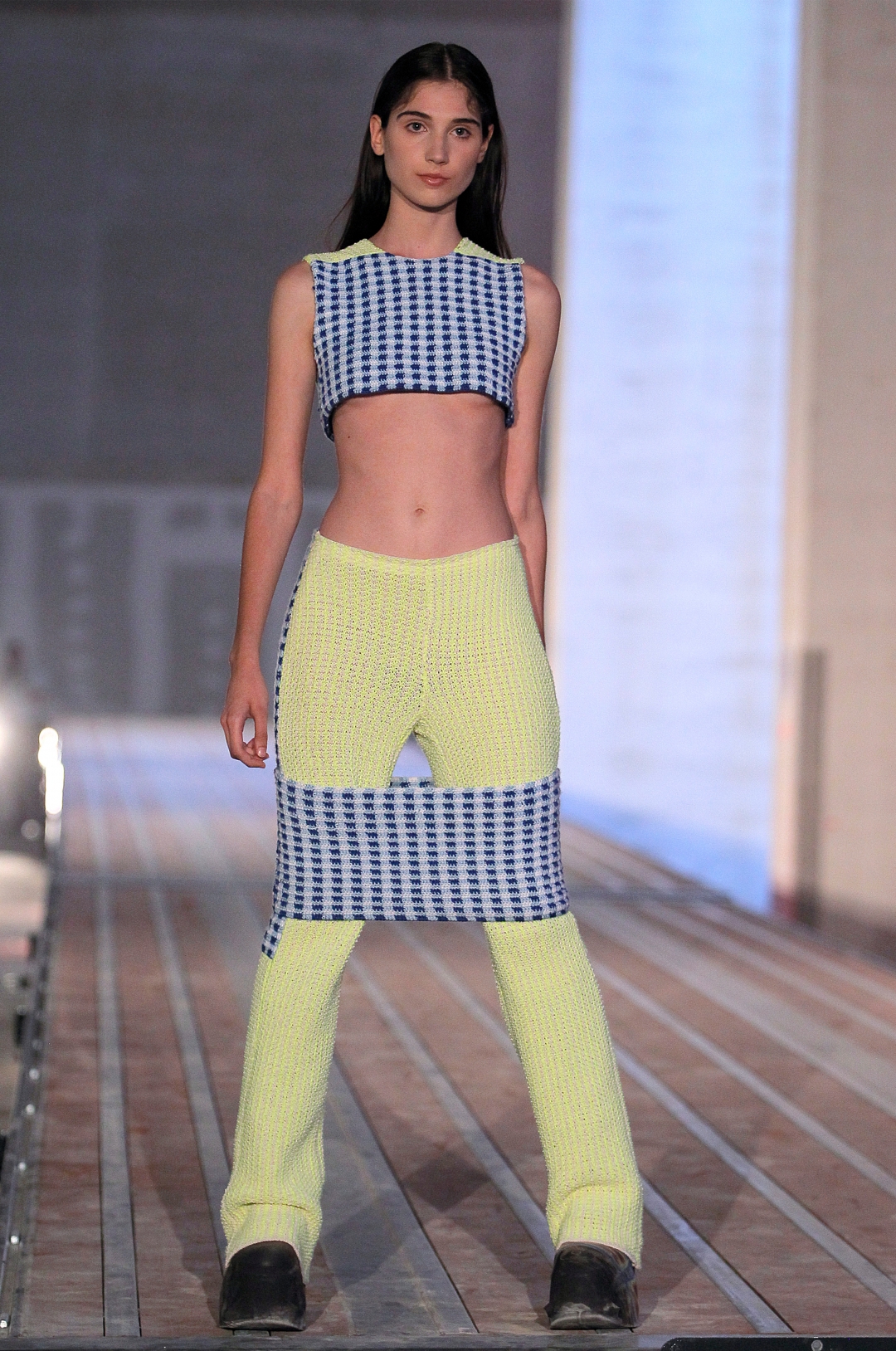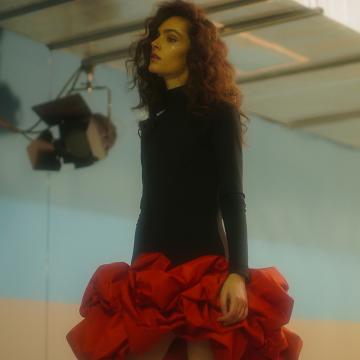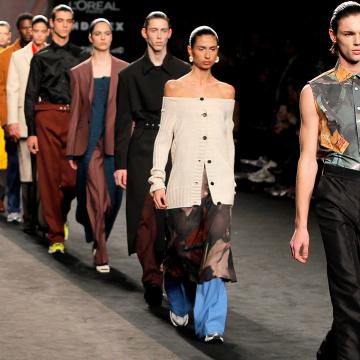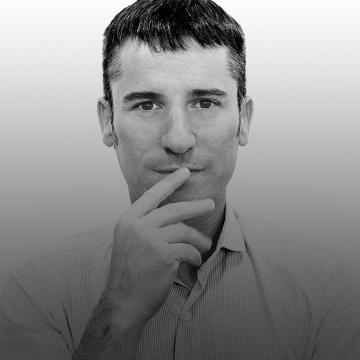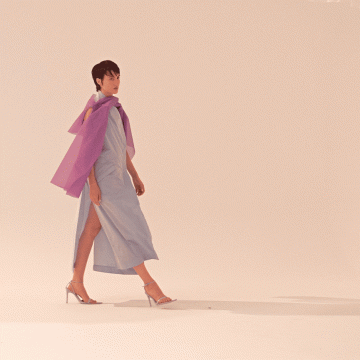Since opening on the 17th of April, Espacio Iberia has welcomed dozens of guests with one thing in common: their infinite talent. Talent that has inspired all the people who have sat there to listen to them.
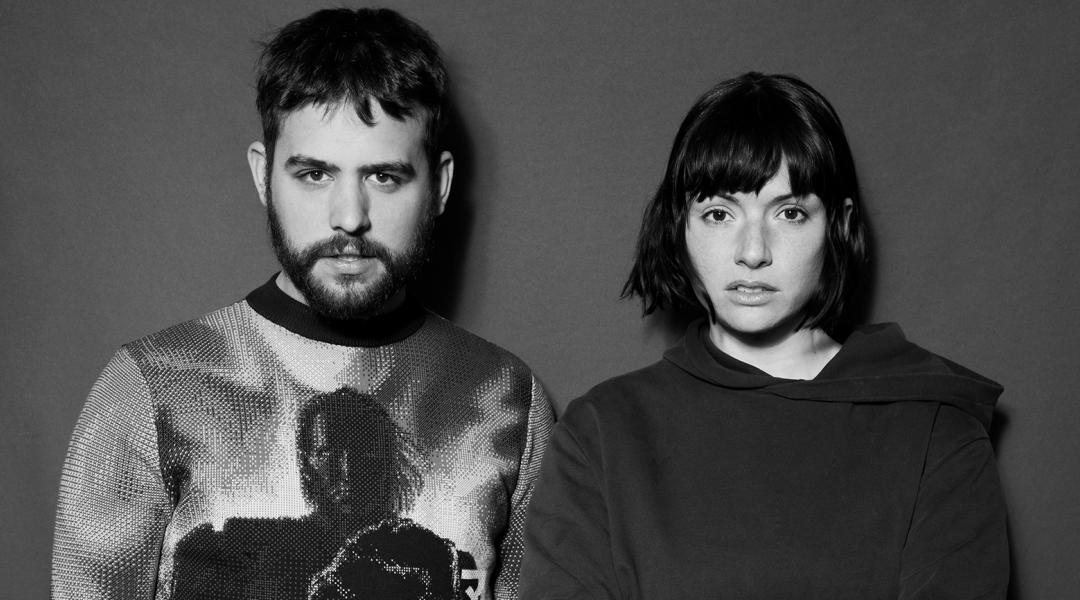
María Lemús and Víctor Alonso make up one of fashion’s most ground-breaking duos. Turning knitwear into the sought-after fabric for trap rappers and modern artists is one of their successes. Another, the fact that their production comes from a cloistered convent.
Dressing Katy Perry, Lady Gaga, Rosalía or Miley Cyrus is not what fills María Lemús (Villafranca de los Barros, 1982), half of María Ke Fisherman, with pride. Nor is receiving the Premio Nacional de Moda [National Fashion Award] from the Queen. What makes her happy is making real fashion. And that translates into turning crochet into a trendy fabric, among other things.
Her latest collections turn to knitwear to dress different urban stereotypes with tops, overalls and dresses that also empower those who wear them. They’ve all been designed based on the electronic music scene, the world of bakala or kawaii. But their ideas have come face to face with an enemy of creativity: being subjected to a schedule that demands constant creation. “We were overwhelmed and almost sad. This only leads to a mental block”. Their solution? To go it alone, whenever they feel like it.
You've confessed to feeling fed up with fashion, what happened?
Sometimes we’ve felt obliged to create or design. Since it’s a really creative process, you can’t always deliver what’s expected of you within certain deadlines. This is what we refer to when we say we're fed up with fashion. We believe that there are unscheduled moments when, for personal circumstances of the brand or other reasons, it’s best to launch something new. This freedom comes with experience, you can allow yourself to go off-piste. That’s where we are now.
Have you found a formula to break the fast fashion pace and get ahead?
In a way, this is what we’ve been doing for some time. For example, in a fortnight or so we’ll be releasing a new collection and we didn’t have a show in January. We want our creativity to be connected to the reality we’re experiencing in the moment. We don’t feel like being part of a circuit that, in our opinion, isn’t moving. Nevertheless, we do feel like releasing a big collection in September, as long as we can show it the way we like, and we find a venue that fits the collection’s story. But we want to avoid doing it out of habit, because we end up feeling like it wasn’t worth the hassle.
You were saying that you want your collections to reflect the reality you are living. Which is this reality?
Now we feel happier and more confident, because we've been developing the brand for more than ten years. When we first started and launched our first collection at Ego we had no idea, our first fashion show was our own! Now we’re having a great time because we’ve matured as a brand and we know what our values are, I think this is the most important thing to work in the right direction.
“We work with cloistered nuns because they’re the ones we get along with the best and the only people who don’t judge our work”
Have you made many mistakes before finding that direction?
We haven’t made mistakes, but there are things that we get by without now. For example, we know that what we like the most is knitwear and we want the entire process to be more and more handmade. Small productions of very special pieces that change in colour, texture and materials. We’ve managed to turn this technique on its head and make it trendy and ground-breaking.
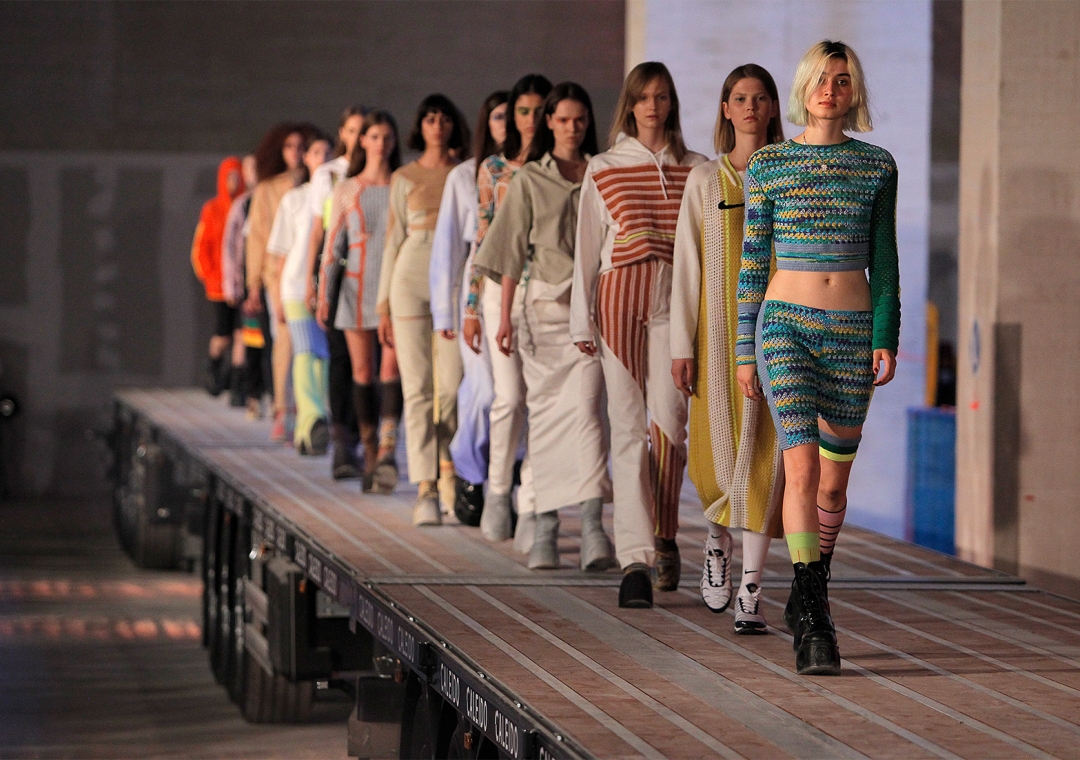
Image of María Ke Fisherman’s SS20 collection fashion show. © Courtesy of the brand
Paradoxically, that trendy knitwear is made by cloistered nuns.
They’re the ones we get along with the best. We started working with them because we had a very big order, for Opening Ceremony, and we needed to have everything ready within six weeks. They were all crochet garments that required many hours of production. Then, a relative told me that some cloistered nuns had just moved to a village in Huelva. Some knew how to crochet, other didn’t, but they learnt to work with us. It’s a lovely relationship because it’s surprising how such advanced production comes from such a closed-off place. But I’ve realised that they’re really the only people who don’t judge our work.
How did you manage to make such a handmade technique work within the urban culture?
I think this is the nicest thing we’ve achieved. We’ve rescued an old and partly lost technique. It’s even hard to find materials, because new spinning industries are more machine focused. I always thought I’d get bored of designing with crochet, because it’s quite limited, but you realise that the technique has room to grow because for many years it has been done in the same way.
This work is closely connected to women, those who are empowered by your collections. Do you feel that this closes the circle?
That’s why I love it. As well as the nuns, we work with many women from Extremadura. They’ve managed to find joy in something that they didn’t practice or that bored them, because it was still a duty, like another chore at home. Suddenly, they’re making garments that surprise them. Some even tell me that when they were young, they didn’t know their bodies and now they make tops and garments that empower women. They seem happy to be part of this change.
You’ve received the Premio Nacional de Moda, as well as Vogue’s Who’s On Next award. Is there anything you haven’t won?
We’re always grateful, but what matters the most to me is being satisfied by the thought of making real fashion, that’s what makes me happy. I like awards, but at the end of the day, the challenge is bringing something new to the runway every season.
You’ve managed this by incorporating knits into brands like Nike. How do you make it work?
Although they’re big brands, the client world is always similar. We also collaborated with Bridgestone. We didn’t hesitate because at María Ke Fisherman we’re closely connected to the automotive world, although we were worried because it’s a very strict Japanese brand. Both parties were very happy with the collaboration. What Víctor and I like is to collaborate with brands with such strong identities that you only need their logo to make the collection. It’s lovely to combine two brands that, in the first instance, have nothing to do with each other and that, together, create something huge. We’d love to do something with Iberia. That’d be great.
Japanese culture has also inspired many of your designs.
There’s always a reference to Japan, whether Japanese cinema from the 70s or other more obscure things, because we don’t like being too obvious. For example, you can look at our garments for a long time and always find new things. For us, that’s also Japan. Information, information and information.
You've dressed Katy Perry, Lady Gaga or Rosalía, and now trap rappers. Who haven’t you dressed?
In the beginning it was actors who wore designer clothes. We were one of the first brands to dress musicians. Now we don’t really mind. Someone I love to dress, because I love her, is Grimes. In fact, she’s asked for clothes. She follows us on Instagram and every time she likes a post, I take a screenshot (laughs).
